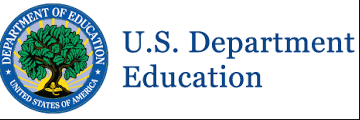STAR Testing Introduced in Mayfield

On August 31 and September 2, students took their first round of a computer-based standardized assessment called STAR testing.
STAR is a program put out by Renaissance Learning designed to help teachers see how much progress students are making throughout the school year.
The test is computer adaptive, which means it adjusts to the person who is taking the test. The test starts with sample questions to determine ability levels and then moves onto real questions. The test is 34 questions long, and each student has one full class period to finish the test. As the students get questions right, the questions or passages get slightly harder. But when the question is answered incorrectly, the upcoming questions get easier. If the question is unanswered for more than a few minutes the test automatically moves on. The computer does this to narrow down the student’s ability level.
Students were tested in language arts and math. Questions about figurative language, definition, plot, theme, summary, connotation and point of view might be on the language arts test. Math may consist of geometry, percents, ratios, measurements and graphing.
According to Dr. Patrick Ward, the director of curriculum who oversees preschool to twelfth grade, Mayfield chose the STAR program because it’s a screener test that gives teachers information. Dr. Ward also said that the STAR testing program seems to be working especially well with students in grades K through 5. Through these tests, Dr. Ward hopes to identify students who need help so they get the support they need. He also said that these tests will also help kids prepare for high school.
When asked if the information from STAR was helpful, one seventh- grade language arts teacher, Mrs. Bartram, said the tests helped her figure out her students’ weaknesses and strengths. “It has allowed me to evaluate my students further and understand their needs at this time.” Mrs. Bartram plans to use STAR testing to see what topics to focus on for her students. “The information will be beneficial to both myself and my team as we plan for daily intervention. This information gives us a baseline as to what specific needs have to be the focus as well as what strengths can be built upon.”
Additionally, seventh-grade math teacher Mr. Duraj said the information helped him with grouping students strategically. “I have been able to use the data provided to help group students to better meet their academic needs.” He plans on to use the information from STAR to guide which students will need review on upcoming topics. “During intervention, I will pull kids who struggled in certain areas to help fill gaps that they need to allow them to succeed. I will also pull students who excelled in certain areas to provide enrichment.”
STAR testing is not over. According to assistant principal Mr. Sheppard, students will take two more rounds of STAR: one close to the end of 2016 and the other toward the end of the school year. “Students will be STAR testing three times throughout the school year in both reading and math. We test at the beginning of the year to see where students are as a starting point, then test again in the middle of the year and the end of the year to see how much growth students have made.”
The second round of testing will be between November 28 and December 21. The final one is going to be between April 3 and May 3. Both of those testing windows are tentative and may possibly change. Exact dates for when each grade and class will test will be decided as the testing windows approach.






